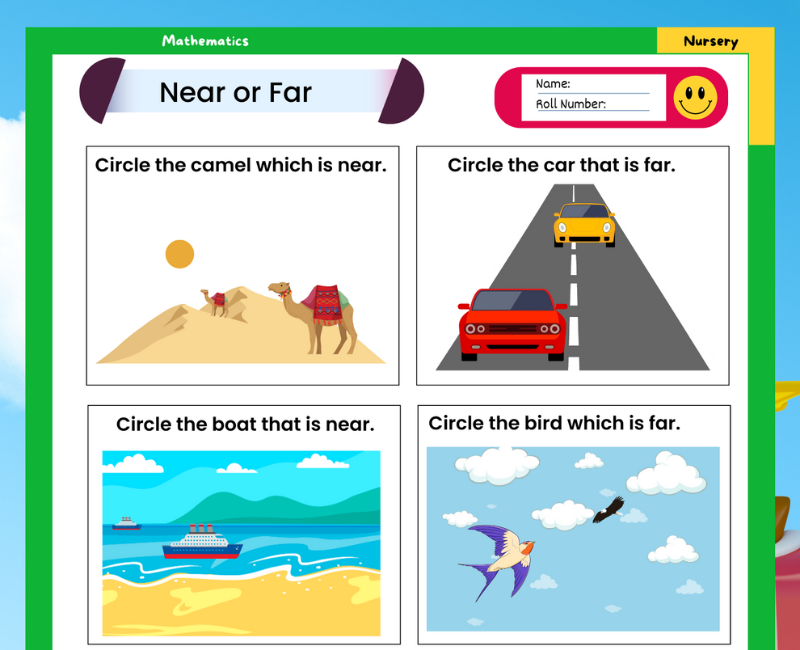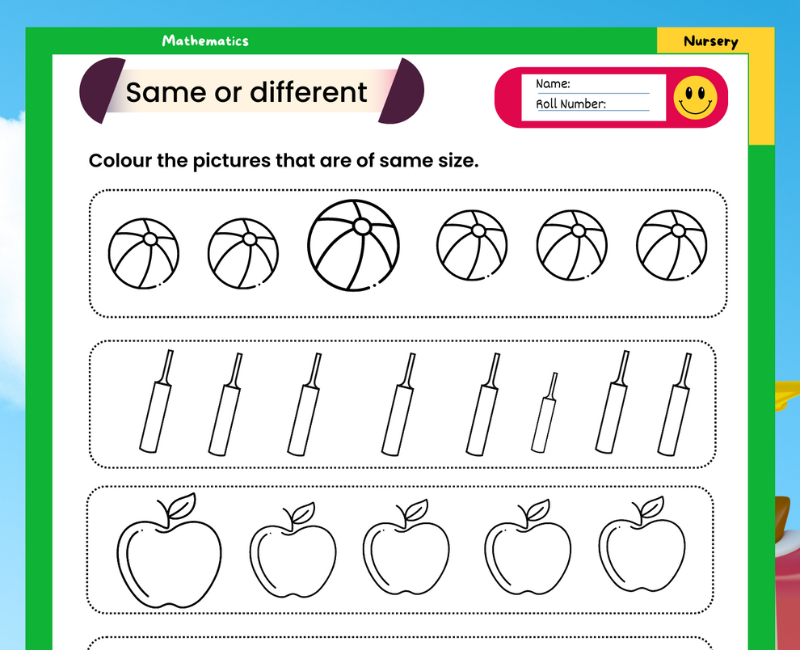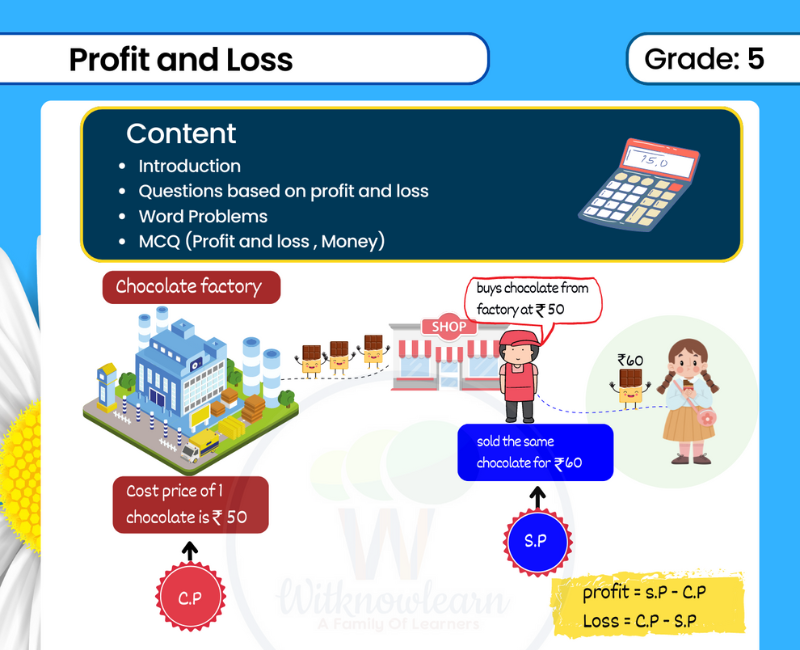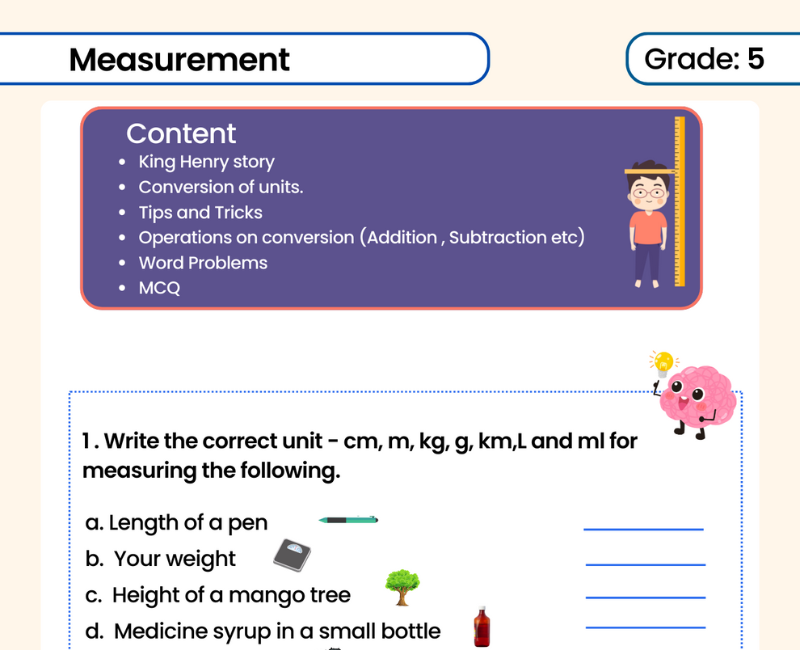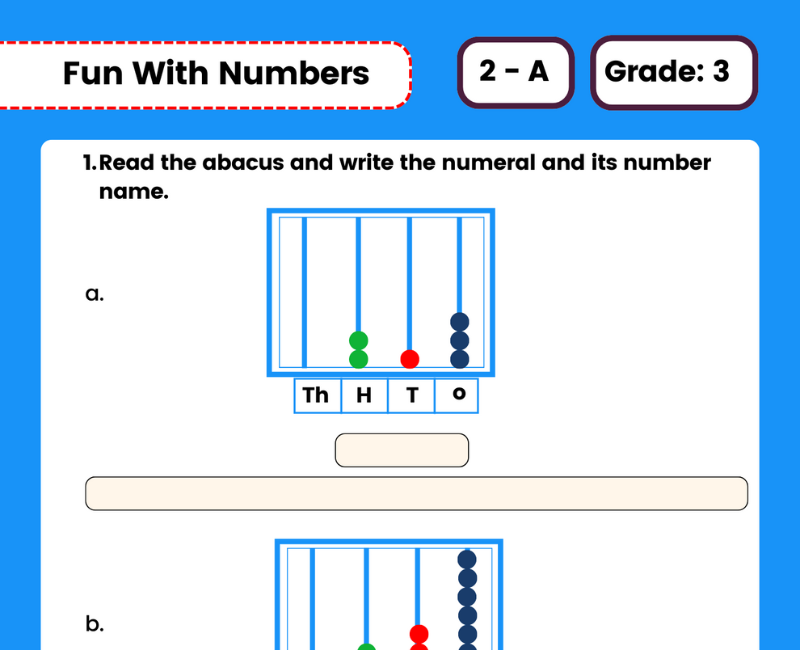Teaching Pre-Maths Skills with Near and Far Worksheet for Nursery
Spatial concepts are an important part of early childhood development, and this Near and Far worksheet is a great way to introduce these concepts to your Nursery students. By practicing identifying objects that are close or far away, children can develop their pre-maths skills and improve their overall understanding of the world around them.
Introduce the concept of near and far.
Before diving into the worksheet, it’s important to introduce the concept of near and far to your Nursery students. You can do this by using real-life examples, such as pointing out objects that are close or far away in the classroom or outside on the playground. You can also use visual aids, such as pictures or toys, to demonstrate the difference between near and far. Once your students have a basic understanding of the concept, they will be ready to tackle the Near and Far worksheet.
Use visual aids to help students understand the concept.
Visual aids are a great way to help students understand the concept of near and far. You can use pictures, toys, or even your own body to demonstrate the difference between the two. For example, you can stand close to a student and then move far away to show the difference between near and far. You can also use objects in the classroom, such as blocks or books, to demonstrate the concept. By using visual aids, you can help your students better understand the concept and apply it to the Near and Far worksheet.
Provide hands-on activities to reinforce learning.
In addition to using visual aids, providing hands-on activities can also reinforce learning and help students better understand the concept of near and far. For example, you can set up a scavenger hunt where students have to find objects that are either near or far from a designated spot. You can also have students sort objects into two categories: near and far. By providing hands-on activities, you can engage your students and make learning about spatial concepts more fun and interactive.
Encourage students to use the vocabulary of near and far.
As you introduce the Near and Far worksheet to your Nursery students, it’s important to encourage them to use the vocabulary of near and far. This will help them better understand the concept and be able to apply it in real-life situations. You can ask them questions like “Is this object near or far from the tree?” or “Can you find something that is far from the door?” By using this vocabulary consistently, you can help your students develop a strong foundation in spatial concepts and pre-maths skills.
Assess student understanding through observation and assessment tools.
As you teach your Nursery students about spatial concepts using the Near and Far worksheet, it’s important to assess their understanding through observation and assessment tools. You can observe their ability to identify objects that are near or far, and ask them questions to gauge their comprehension. Additionally, you can use assessment tools like quizzes or games to reinforce their understanding and identify areas where they may need additional support. By regularly assessing their understanding, you can ensure that your students are developing strong pre-maths skills and are prepared for future learning.
Understanding spatial concepts is a vital part of early childhood education. Among these concepts, 'far and near' or 'near and far' play a crucial role in developing a child's understanding of distances and positions. Worksheets, such as far and near worksheets, near and far worksheets, and position words worksheet for class 1, are excellent tools for teaching these fundamental pre-number concepts.
Far and near worksheets, or near and far worksheets, typically consist of a series of engaging activities designed to help children comprehend these spatial terms. For instance, a far near worksheet might contain images of objects placed at different distances from a reference point, with instructions for the child to identify which objects are 'near' and which are 'far'. Worksheet far and near images can significantly enhance this learning experience, as visual aids make abstract concepts more tangible for young learners.
Kindergarten worksheets far and near worksheets and near and far activity worksheets are ideal for incorporating these spatial concepts into the curriculum. These worksheets can include activities such as coloring, matching, and tracing, all designed to make learning fun and interactive for the children.
Pre-number concept worksheets are a valuable resource for teaching fundamental mathematical concepts. These worksheets can cover a range of topics, including counting, number recognition, and spatial concepts like 'near far'. They serve as an excellent introduction to mathematics for young learners, paving the way for more complex mathematical concepts in the future.
Maths worksheets for junior kg, math worksheet for class nursery, and sr kg worksheet maths are essential tools in teaching young learners. These worksheets, which can often be found in formats such as lkg worksheet pdf free download, offer a wide array of exercises, from basic number recognition to simple addition and subtraction. They're designed to be engaging and easy to understand, making learning an enjoyable process for the children.
For instance, an 'in on under near worksheet for class 1' might incorporate spatial concepts with basic counting, asking children to count the number of objects in, on, under, or near a particular item. Similarly, a 'position words worksheet for class 1' can help children understand different positional words, including 'near' and 'far', by using fun activities and games.
Images play a crucial role in teaching these concepts, and far and near images, or near far images, can be particularly helpful. These images usually depict objects at varying distances from a reference point, helping children visually grasp the meaning of 'far' and 'near'.
Creating sentences using these positional words, such as 'near make sentence', can also enhance a child's understanding. For example, asking a child to make a sentence using the word 'near' can help reinforce the concept in a practical context.
Overall, whether you're using a maths worksheet for sr kg pdf, a math worksheet for class nursery, a worksheet for nursery class maths, or even free lkg worksheets, incorporating the concepts of 'far and near' or 'near and far' is crucial. These spatial concepts form the bedrock of many mathematical concepts and are essential for a child's overall cognitive development. So, whether you're a parent, teacher, or tutor, make sure to include far and near worksheets in your teaching resources.
